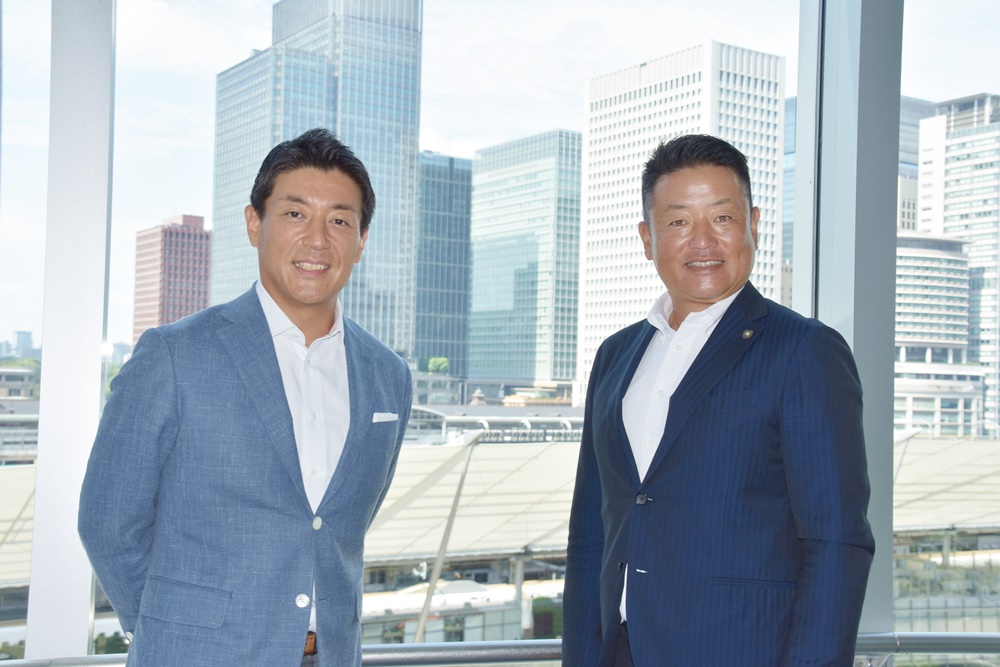[Speakers]
・Takeshi Tanaka, president of RX Japan
・Taro Komiya, Senior Managing Director of the Japan Management Association (JMA)
Through the COVID-19 pandemic, society worldwide underwent a major transformation. Digital transformation (DX) has progressed rapidly, transforming people’s values and working styles. The emphasis has shifted to how to achieve maximum efficiency at a minimum cost by making full use of digital technology. Exhibitions are no exception to this trend, and it is no longer acceptable to devote resources to an exhibition simply because it is an annual event, as in the past.
So, what kind of presence should exhibitions have in the future?
To find out, we sat down with Takeshi Tanaka, president of RX Japan, a long-time leader in the Japanese exhibition industry, and Taro Komiya, senior managing director of the Japan Management Association (JMA), to discuss this question.
September 27, 2022, Tokyo Midtown Yaesu
Coordinator: Tatsuro Ikegami

■Exhibitions are the place to demonstrate national strength.
ーHow have you been involved with exhibitions in the past? What is your perception of the nature and role of exhibitions?

Takeshi Tanaka
I joined RX Japan (then Reed Exhibitions Japan) in 1999, and at that time, exhibitions had a strong image of being festivals-like events where a large number of people gathered together. The motivation for exhibiting seemed to be more about showing the strength of the company rather than conducting business meetings with buyers. Later, as the economy gradually stagnated, buyers became more serious about the standards they demanded of exhibitions, and exhibitors began to seriously consider cost-effectiveness. They began to analyze their client’s needs in detail. As the organizer, we were working on creating a more meaningful platform for both exhibitors and visitors, when the world faced the COVID-19 pandemic following by the Great Reset. The companies who had continuously exhibited at each show reviewed their budget and the questioned whether the show was really worth attending. We were now at the point where we had to reevaluate what exhibitors were really looking for, and at the same time, we had to prepare objective data that could be used as a basis for our analysis, just like marketing companies do. This flow is expected to accelerate in the future even more. The future development of exhibitions will not be possible without creating a platform by combining the unique advantages of the real world of face-to-face (F2F) with the speed of digital technology. The desire for deliverables and tangible numbers is growing stronger and stronger, so it is up to us as organizers to show how we can meet that demand.
